This image shows three of Saturn's small moons and a portion of its rings (left). The two shepherd moons, Prometheus and Pandora, guide particles in the F ring into a narrow band. Another small moon, Epimetheus, can be seen in the upper right corner of the image. This image was taken by the Cassini spacecraft on May 1, 2004 when Cassini was 31.4 million km (19.5 million miles) from Saturn.
Click on image for full size
Image courtesy NASA/JPL/Space Science Institute.
Prometheus
Prometheus is a small moon of Saturn.
It was discovered by S. Collins and others in 1980 from photos taken by the Voyager
1 spacecraft.
This moon's name comes from Greek mythology. Prometheus was a Titan who stole
fire from the gods of Mount Olympus and gave it to humankind. Zeus punished
Prometheus for this deed. Prometheus was the son of Iapetus and the brother
of Epimetheus and Atlas. Prometheus means "foresight" in Greek.
Prometheus and Pandora,
another small moon of Saturn, are known as shepherd satellites. These two small
moons
orbit within Saturn's vast ring system.
Like shepherds guiding their flocks of sheep, these two moons guide the particles
of Saturn's "F ring" into
a narrow band. The combined gravitational pulls of the two moons force the
ring particles to orbit within a narrow range.
Prometheus is not round, but is more of a "potato-shaped" moon.
It is about 145 by 85 by 62 km (90 x 53 x 39 miles) in size. It orbits Saturn
at a distance of 139,353 km (86,590 miles) from the planet's center.
You might also be interested in:
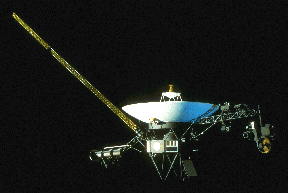
Unexpected discoveries made by the two Voyager spacecrafts during their visits to the four largest planets in our solar system have changed the field of space science. Voyager 2 was launched on Aug. 2
...more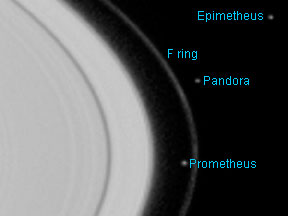
Pandora is a small moon of Saturn. It was discovered by S. Collins and others in 1980 from photos taken by the Voyager 1 spacecraft. Pandora's name comes from Greek mythology. Pandora was the first woman,
...more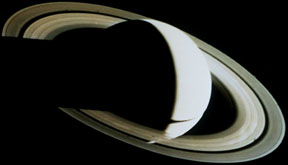
Have you ever seen a picture of Saturn's rings? If you have ever seen a picture of Saturn, it's likely you saw its rings too! The rings are very pretty and many colors. They circle around the middle of
...more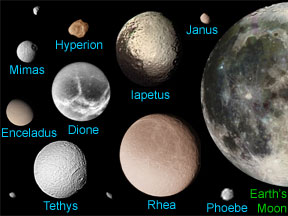
Saturn has // Call the moon count function defined in the document head print_moon_count('saturn'); moons. Many of those are tiny chunks of rock or ice only a few kilometers (miles) across. One of Saturn's
...more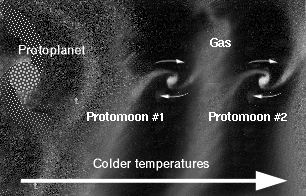
Titan is like other icy moons. Scientists want to know "how come Titan is the only one that has a big atmosphere?" Titan formed the same way other planets did, as shown in this picture. Where Titan formed,
...more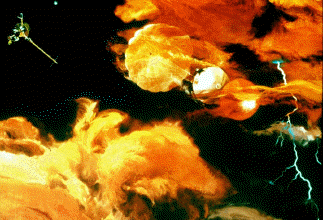
The air of Titan is a lot like the Earth's, except that it is very cold, from -330 degrees to -290 degrees! Like the Earth, there is a lot of Nitrogen and other complex molecules. There also may be an
...more
Prometheus is a small moon of Saturn. It was discovered by S. Collins and others in 1980 from photos taken by the Voyager 1 spacecraft. This moon's name comes from Greek mythology. Prometheus was a Titan
...more













